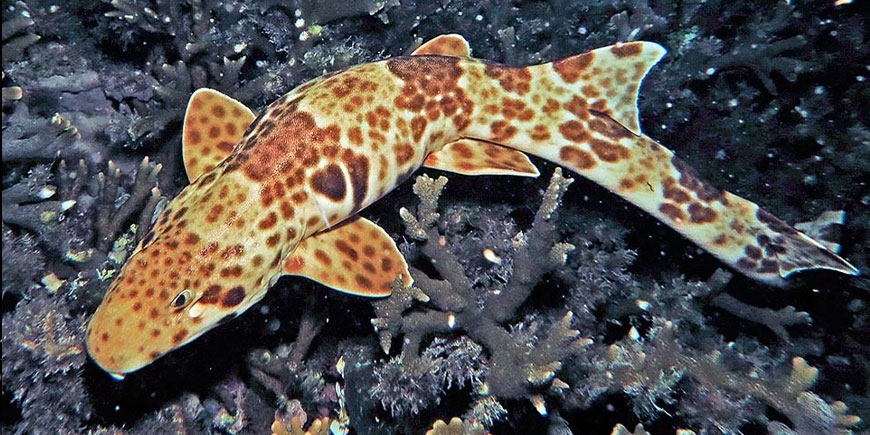Sharks move to land to escape the warming of the Pacific Ocean.
Sharks have been in our waters for millions of years. These animals have been known to mankind since we first began to sail the seas, yet the biodiversity of planet Earth never ceases to amaze us.
The study
A team of biologists from Florida Atlantic University (FAU) has published a study in the journal Integrative Comparative Biology ndescribing the observed behaviour of some specimens of the ‘epaulette shark‘, belonging to the genus Hemiscyllium ocellatum.
These are small sharks, about one metre in length, with a slender, cylindrical body, a long tail, and a ventral mouth. They can be distinguished from other species by the pattern of their skin, with white and black spots on the dorsal region.
They live on shallow coral reefs between Australia, Indonesia and New Guinea and are currently undergoing an evolutionary process in response to climate change and changes in the temperature of the Pacific Ocean.
The team, led by Marianne Porter, studied the movement dynamics of these sharks and how they use their fins. They found that these sharks are able to ‘walk‘ on land for 30 metres using their paddle-shaped fins and can survive without oxygen for up to two hours.

Walking sharks
The “walking” sharks move by using their front pectoral fins along with their rear ventral fins, adopting a gait that resembles walking more than swimming. This allows them to move slowly along the seabed and even emerge from the coral reef during low tide.
«The scientific literature, – says Porter – suggests that this species has developed adaptations to withstand some of the challenging conditions of the 21st century. These skills may be key to their survival, allowing them to ‘walk‘ long distances on land to reach more suitable environments. They may also be related to their physiological performance under challenging environmental conditions, including those associated with climate change.»
Previous studies and future implications
In 2013, researchers discovered the ‘bamboo shark‘ on the Indonesian seabed, a peculiar species of shark that uses its tiny fins to ‘walk’ on the seabed, where it feeds on fish and crustaceans.
In 2020, further research by the University of Queensland revealed that at least nine shark species use their fins to walk in shallow water.
The key element of this new study is the epaulette shark’s resistance to hypoxia.
This discovery marks a significant step in understanding how climate change influences the evolution of animals, a topic that deserves further exploration in the future.


